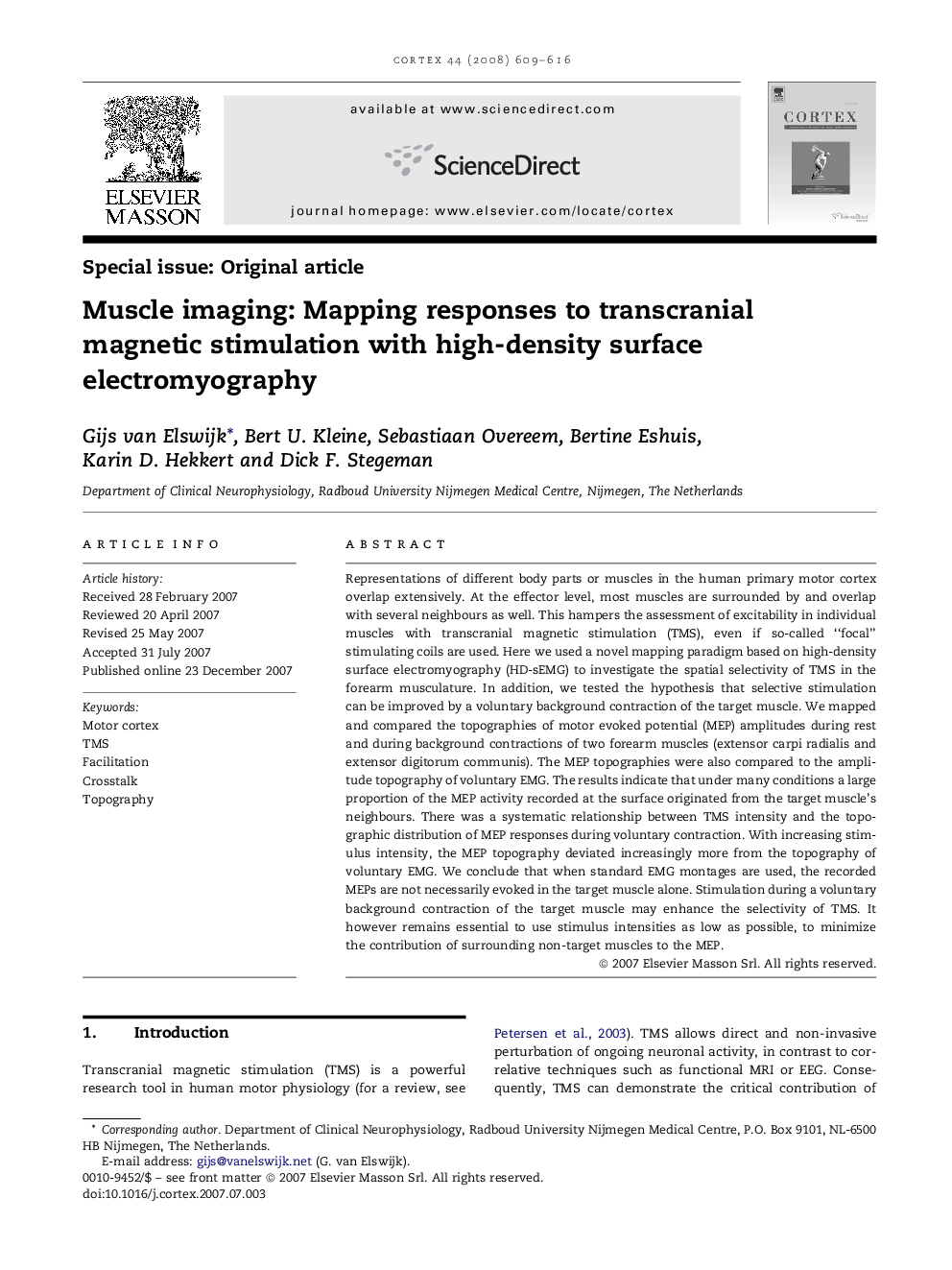| Article ID | Journal | Published Year | Pages | File Type |
|---|---|---|---|---|
| 942639 | Cortex | 2008 | 8 Pages |
Representations of different body parts or muscles in the human primary motor cortex overlap extensively. At the effector level, most muscles are surrounded by and overlap with several neighbours as well. This hampers the assessment of excitability in individual muscles with transcranial magnetic stimulation (TMS), even if so-called “focal” stimulating coils are used. Here we used a novel mapping paradigm based on high-density surface electromyography (HD-sEMG) to investigate the spatial selectivity of TMS in the forearm musculature. In addition, we tested the hypothesis that selective stimulation can be improved by a voluntary background contraction of the target muscle. We mapped and compared the topographies of motor evoked potential (MEP) amplitudes during rest and during background contractions of two forearm muscles (extensor carpi radialis and extensor digitorum communis). The MEP topographies were also compared to the amplitude topography of voluntary EMG. The results indicate that under many conditions a large proportion of the MEP activity recorded at the surface originated from the target muscle's neighbours. There was a systematic relationship between TMS intensity and the topographic distribution of MEP responses during voluntary contraction. With increasing stimulus intensity, the MEP topography deviated increasingly more from the topography of voluntary EMG. We conclude that when standard EMG montages are used, the recorded MEPs are not necessarily evoked in the target muscle alone. Stimulation during a voluntary background contraction of the target muscle may enhance the selectivity of TMS. It however remains essential to use stimulus intensities as low as possible, to minimize the contribution of surrounding non-target muscles to the MEP.
